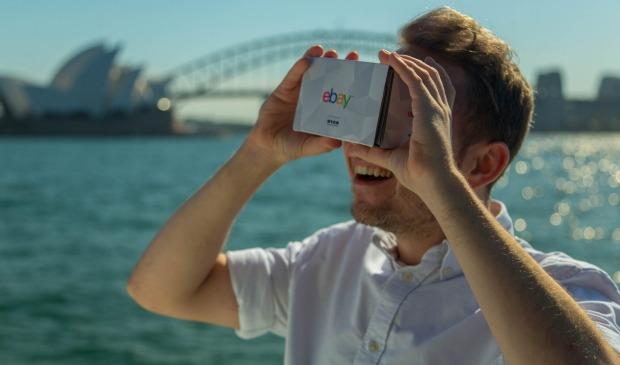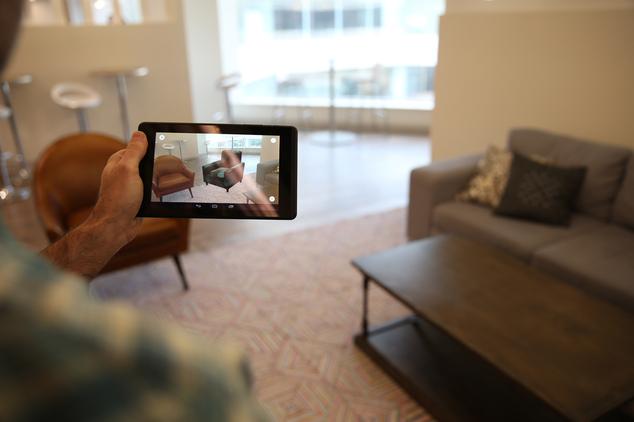A report on both augmented and virtual reality has just been released, outlining what you should expect to see in regards to its success and usage in the future. In “Augmented Reality and Virtual Reality Market to 2025 – Global Analysis and Forecasts by Technology, Sensors & Components and Applications,” it’s projected that the trends we are seeing currently are going to continue.
Obviously there have been many sweeping changes in the technology area, offering up a host of new terms, many of which we discuss on a daily (if not hourly) basis here at 3DPrint.com, to include:
- Augmented reality
- Virtual reality
- Internet of Things (IoT)
- Cloud computing
- 3D printing
- Automation
- Artificial intelligence
All of these, along with advanced communications systems and Big Data, have the potential to make big changes in our lives from industry and manufacturing to the office, home, and best of all: recreation. While 3D printing is certainly making significant impacts across the board, it’s thought that both AR and VR are going to serve as the ‘new age technologies’ allowing for major change in a variety of different industries.
Virtual reality has been touted as a ‘potential technology’ for decades now, but along with other areas such as robotics, it has been making a slow climb to fruition, with more accessibility and affordability now available via headset products that we report on like Oculus Rift and Google Cardboard, along with a growing host of relevant accessories and often free apps piggybacking on their success. Impacting recreational, medical, retail, and many other venues, virtual reality today is still connected to gaming for most.

Virtual reality is a big player in technology, regarding entertainment. Here, users experience ‘In the Eyes of the Animal,’ a exhibit which uses Oculus Rift with an extra attachment.
And while many may still be getting used to what augmented technology is exactly—sort of a muted-down sibling to virtual reality—it’s quickly becoming the frontrunner, and perhaps that’s because in the actual reality of an actual economy, it’s more feasible as a product and tends to be more easily adopted by consumers.
Offering a combination of virtual and real world that leaves users with one foot in each place, able to decipher the difference between artificial and authentic, future projections see AR surpassing the VR arena. This should be seen, predictably and heavily, in the gaming market with AR being employed as a common tool to enhance the user’s experience. Expect to see this technology gaining ground, however, in other areas we are seeing technology like 3D printing taking hold: industrial, medical, automotive, and more.
“Additionally, a substantial growth of this market is observed in infotainment industry, with availability of featured AR & VR devices with increased computational abilities, which will enhance the user interface in gaming and entertainment,” states the report.
There are still some obstacles to progress however, including:
- High hardware and deployment cost
- Limited awareness in end-user industries
- Limited applications in numerous industries
“The number of consumers being catered to are minimum in number, as Augmented Reality and Virtual Reality are still in the emerging phase and have limited reach to different requirements of the customers or enterprises,” states the report.
Both technologies are also considered to have been broadly segmented, also due to components which have integrated sensors and semiconductors.
“In addition to this the AR and VR market is bifurcated into on end-user industry such as entertainment, education. Industrial, medical, aerospace & defense, and retail among others,” includes the report.
In terms of what ground you’ll see this technology playing on mainly, North America is currently the strongest region, with ‘considerable usage’ of both AR and VR, but the Asia-Pacific (APAC) region is supposed to begin leading the industry. It’s expected that companies topping the list for R&D and production in these areas will be: DAQRI LLC, Augmented Pixels Co., EON Reality, Inc., Innovega, Inc., Total Immersion, Vuzix Corporation, Blippar, Oculus VR LLC, Microsoft Corporation and Google.
As these companies are responsible for more applications, as well as for more compact VR headsets, we should expect to see the technology paving a path into both education and research, strengthening processes in training and development. As we’ve pointed out already, AR has great use in retail too, and that will most likely continue, as it offers such ease for consumers, assuming they are on board with new technology. For more information on how AR and VR technologies are making an impact already, check out some of our recent stories, on topics like augmented reality as a way to preview 3D printing, as well as a new smartphone attachment that lets you create your own virtual reality world. Are you a fan of using either of these new technologies so far? Discuss further over in the Virtual & Augmented Realities forum at 3DPB.com.
[Source: ReportLinker]
eBay shoppers can look forward to using the Shoptical device, similar to Google Cardboard, as they make retail selections in Australia.
Subscribe to Our Email Newsletter
Stay up-to-date on all the latest news from the 3D printing industry and receive information and offers from third party vendors.
You May Also Like
Precision at the Microscale: UK Researchers Advance Medical Devices with BMF’s 3D Printing Tech
University of Nottingham researchers are using Boston Micro Fabrication‘s (BMF) 3D printing technology to develop medical devices that improve compatibility with human tissue. Funded by a UK grant, this project...
3D Printing Webinar and Event Roundup: April 21, 2024
It’s another busy week of webinars and events, starting with Hannover Messe in Germany and continuing with Metalcasting Congress, Chinaplas, TechBlick’s Innovation Festival, and more. Stratasys continues its advanced training...
3D Printing Webinar and Event Roundup: March 17, 2024
It’s another busy week of webinars and events, including SALMED 2024 and AM Forum in Berlin. Stratasys continues its in-person training and is offering two webinars, ASTM is holding a...
3D Printed Micro Antenna is 15% Smaller and 6X Lighter
Horizon Microtechnologies has achieved success in creating a high-frequency D-Band horn antenna through micro 3D printing. However, this achievement did not rely solely on 3D printing; it involved a combination...































